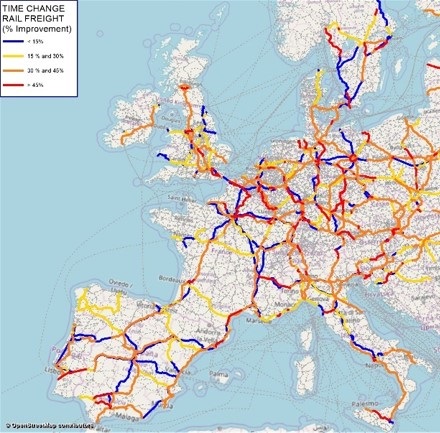As already mentioned in this “Radar” section, the CEF programme is also being confirmed for the next 2021-2027financial period, with a total budget of over 30 billion euros.
But what are the expected effects of the actual completion of the trans-European transport network by the year 2030? A study, commissioned by the EU from three leading consultancy firms, shows a total of 800,000 people employed (Full Time Equivalent) as a benefit of the activity related to the construction and entry into operation of the TEN-T.
It is also expected that gross domestic product will increase by 1.6% and that 26 million tonnes of CO2 emitted into the atmosphere will be reduced between 2017 and 2030.
However, the positive effects will not be uniformly distributed in Europe: for example, reductions in average passenger transport times will be more pronounced in Eastern Europe and some corridors, such as the Scandinavian-Mediterranean corridor, will be able to achieve more noticeable improvements than others, such as the Baltic-Adriatic or the Atlantic.
Even at the level of Member States, it should be noted that the greatest impact is expected especially in some Eastern European countries, such as Latvia, Slovakia and Lithuania, but Italy is still in the middle of the ranking, with an increase in GDP by 2030 of just under 2%, more than is expected for Germany and France. Moreover, our country is in fourth place in terms of expected employment, after Poland, Spain and France. The improvement in environmental terms is estimated at a decrease of 1.4% in CO2 emissions, 0.7% in PM and NOx emissions, thanks to the transition to more efficient and sustainable forms of traction and the modal shift in favour of greener types of transport.
It is clear that the greatest impacts are to be expected in those areas of the EU that are still below average in terms of infrastructure provision and macro-economic indicators: the gradual integration of the EU’s central and peripheral regions is also due to the implementation of the TEN-T, with increasing convergence in terms of accessibility and quality of transport infrastructure and services.

